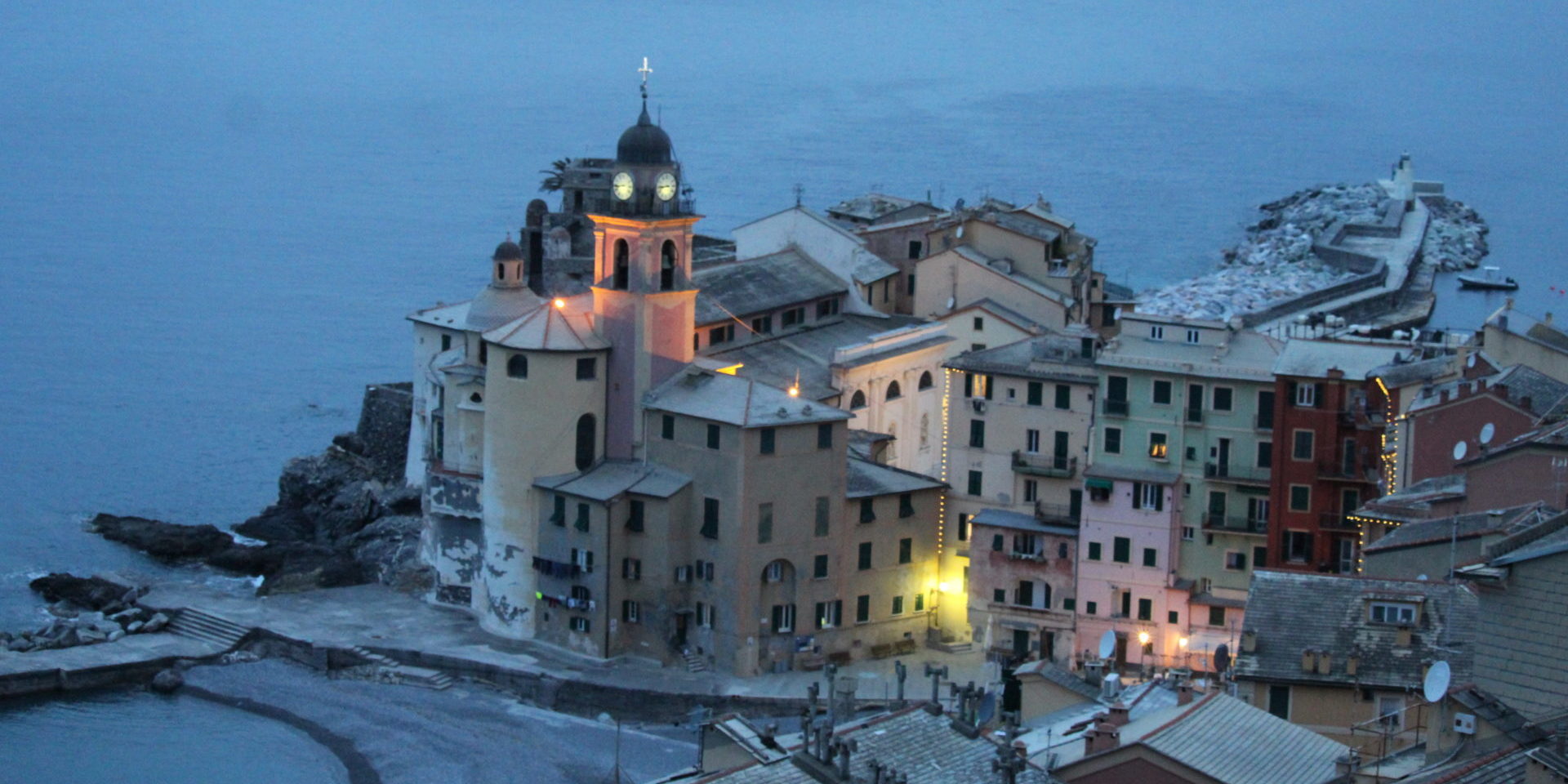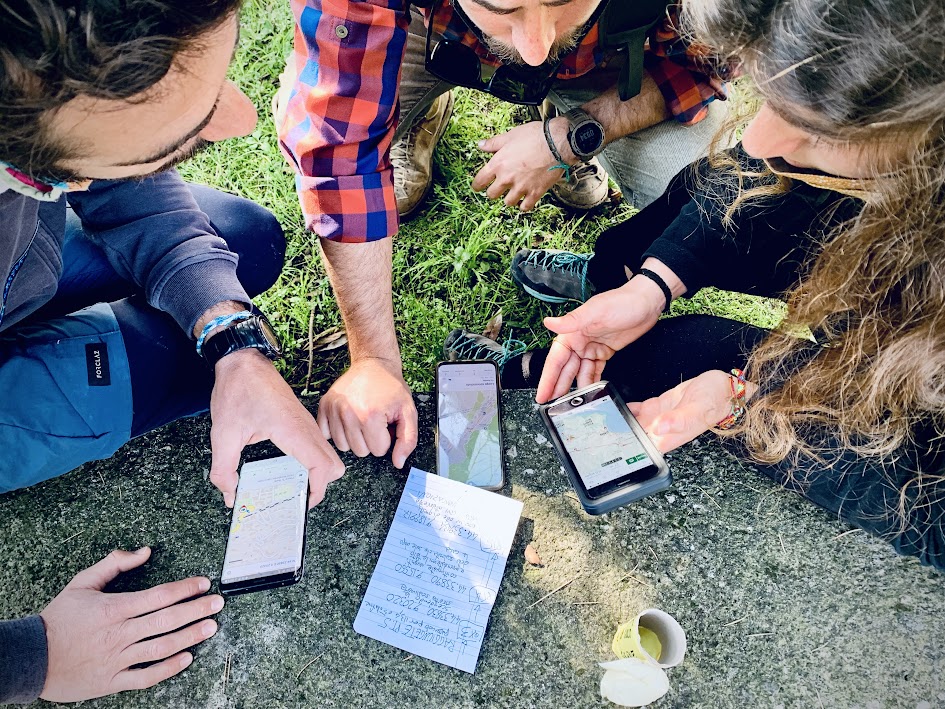6 curiosities about unmissable places in Camogli, Liguria
Today I’m going to accompany you on your visit to “my” Camogli, Liguria. Its conformation and architecture represent exactly what one would expect from a Ligurian seaside village: the tall, colored houses piled on top of each other, framed by the greenery of the mountains and by the blue of the sea. By now the town’s economy is more centered on tourism than on the fishing and sailing that were part of its lustrous past. But on summer evenings still today, you can admire the hotchpotch of boats and fishing trawlers as they unload their crates in the tiny port with the day’s freshly caught fish.
Most people that visit the village are happy to just have a swim and a stroll, perhaps in the company of a delicious slèrfa di fugassa – or slice of focaccia, in Genoese dialect – but there is much, much more to Camogli than meets the eye!
In this article I will tell you about 6 different curiosities linked to 6 Camogli locations. Six places where you can stop off and discover the history and traditions that still make my town lively today.
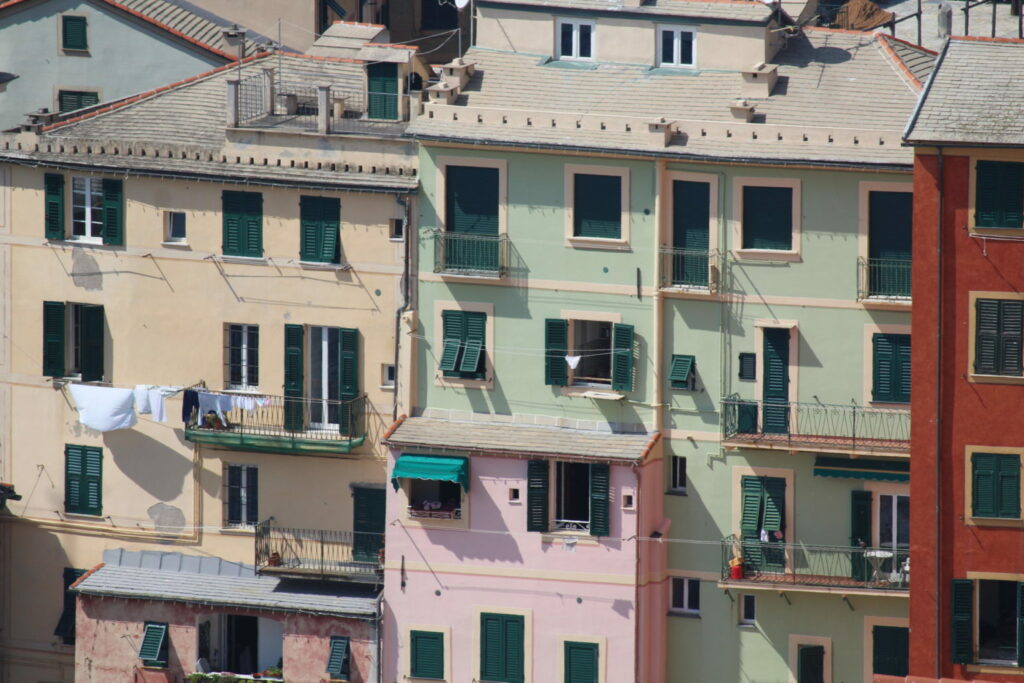
The city of the 1000 white sailing ships
The maritime museum of Camogli Liguria
Camogli, which today counts around 6000 inhabitants, was also known as “The city of the 1000 white sailing ships”. This epithet has its origins in the 19th century: at that time the city was one of the greatest powers of the merchant navy of the peninsula. In fact, in 1856 Camogli owned a 700-strong fleet of ships registered with the maritime compartment. To have a benchmark to compare to: just consider that Hamburg, one of the most important ports in Europe, at that time had just 560 vessels.
During this period, thanks to the great economic revenues that ensued, important structures were built: the Teatro Sociale, a hospital, two banks, a nursery school and the mutual insurance society. Not bad for a tiny Ligurian village!
To immerse yourself in the history of this golden epoque, you must definitely visit the Gio Bono Ferrari Maritime Museum. This little museum is in fact a precious treasure chest containing paintings, instruments, memories and documents that over time have been donated by all the Camogli families. Amongst these items you will also find my great grandfather Carlo Arnoldi’s seaman’s book and the equipment that belonged to my great grandfather, Angelo Bertora. In this way, in this museum their objects, like the pieces of a jigsaw, reconstruct the history of the town.
Camogli and the remotest island in the world
Largo Tristan da Cunha
The British archipelago of Tristan da Cunha is found in the Southern part of the Atlantic Ocean and is considered to be the most remote archipelago in the world. Immagine drawing a triangle that joins Cape Town, Cape Horn and the Antarctic on a planisphere: here it is, Tristan da Cunha, bang in the middle. The only inhabited island is the main island, which today is home to a community of around 300 people.
But what on earth has Camogli got to do with it?
In 1892, the brig Italia was shipwrecked on the island, with some sailors from Camogli as part of the crew. After a year spent working side by side on the island with the locals, the Camogli men Gaetano Lavarello and Andrea Repetto decided to remain there permanently. The two men married islanders and had children. For this reason, still today two of the seven surnames present on the island are these ones: typical of Camogli.
Through the years there has always been a dense and affectionate correspondence between the two places, which have thus remained intertwined over time despite the geographical distance.
As a symbol of the close relationship between these two lands, in Camogli we can find “Largo Tristan da Cunha”, situated right below the maritime museum. If on the other hand you ever find yourselves in Tristan da Cunha (a bit harder from a logistical point of view!) there you will find the “Camogli Hospital”.
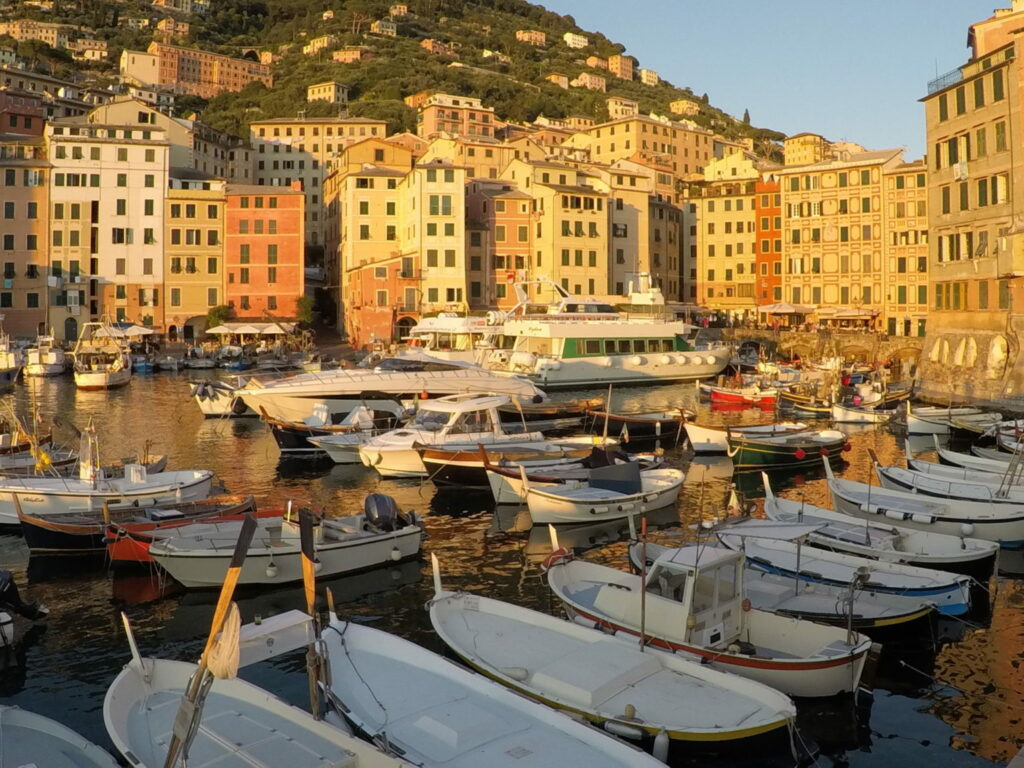
The tradition of the fishing nets
The old furnace on the pier in Camogli Liguria
If you have ever been to Camogli, you are sure to have walked along the pier, up to the lighthouse. From here one can enjoy one of the most beautiful views over both the village and the gulf of Genoa. At the start of the walkway, you may perhaps have noticed a strange building, now disused, made up of an old cauldron and a washing board. This is the ancient furnace for dyeing fishing nets.
In the past, nets were produced in cotton fibre, a material which is fairly delicate and not easily camouflaged in the water. In order to improve the resistance and also give the fibre a darker colour, the nets were cooked in this cauldron. For the dye, chopped up maritime pine bark was used in boiling water, which leached a reddish brown colour. Once dyed, the nets were left to drain on the washing board and then successively hung out to dry on the typical wooden poles.
The entire system was public and could be used by any fisherman who, to show his thanks, usually gave an offering to the parish.
Today net production in Camogli is limited and the technology has evolved. But still today during the winter season you can observe handmade production of special nets needed for the traditional Tuna net, made from biodegradable natural fibres.
Our Lady of the good voyage (or of the Graces)
The Shrine to Our Lady of the good voyage in Camogli Liguria
The historical centre of Camogli dates back to Medieval times and is concentrated in the areas of the Port and of the Island (so-called because long ago it was entirely separate from the dry land). Beyond the port, basilica and castle, the tall houses and narrow alleys (called caruggi) together form a tiny labyrinth.
Right in one of these caruggi, you will find the shrine to the “Madonna of the good voyage” or “of the Graces”, protector of fishermen and sailors. This shrine found amongst the modern day bars is known as the “Madonna dei gotti” (gotto = glass in Genoese dialect). Yes, that’s right: “Madonna of the glasses”! This slightly provocative name derives from the fact that this area near the port hosted numerous taverns, and it is said that these places were hangouts not only for fishermen and seamen but also for their wives who, whilst waiting for their husbands to return, came to console themselves here with a few good glasses of wine.
The feast day to honour the “Madonna of the good voyage” (or “of the graces”) is held every year on the first weekend of October. On this occasion, the alley or caruggio becomes lively with lights, rustie (roast chestnuts), focaccette al formaggio (delicious local cheese fritters), trilli (typical Genoese songs) and, of course, the unmissable gotti!
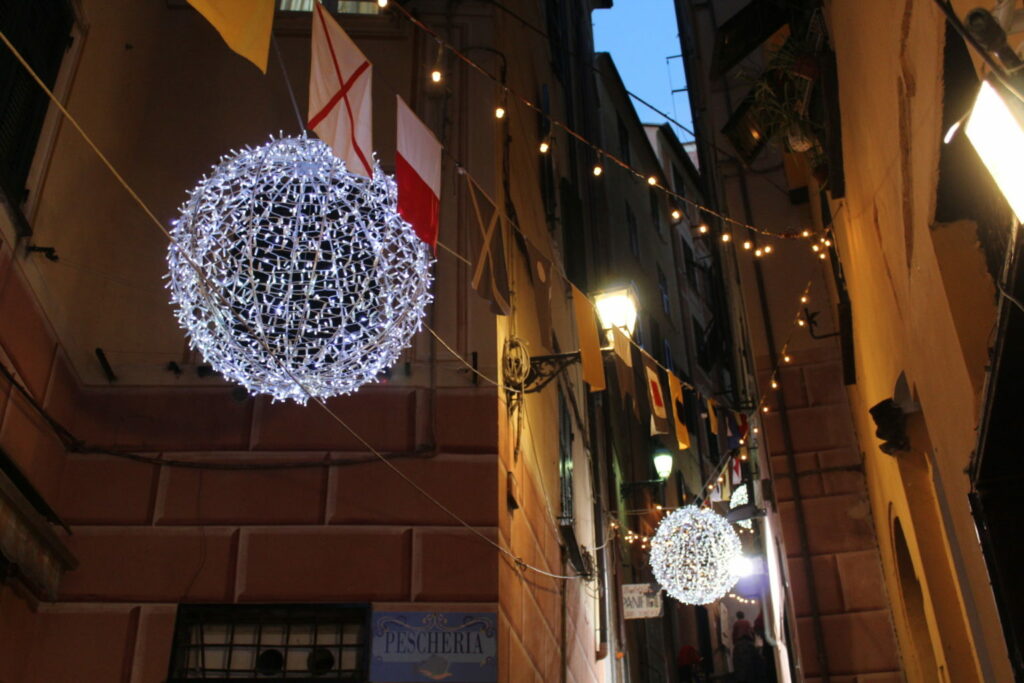
The treasure of the Cala dell’Oro
Portofino Protected Marine Area
The Portofino Protected Marine Area is undoubtedly one of the jewels in the crown of this area. Despite the name, this area is spread over 3 different towns: Portofino, Santa Margherita and Camogli. Amongst the points of interest inside the Camogli town city limits we will find: Punta Chiappa, the Hermit’s grotto, the bay of San Fruttuoso with the famous Christ of the Abyss and the inaccessibile cove named the Cala dell’Oro or the Bay of Gold.
This cove is in the A zone of the marine area, thus is a strict nature reserve. In fact in this bay every sort of human activity is forbidden (from swimming to sailing and fishing). Access is rarely conceded, only for strictly scientific objectives.
All this does nothing but increase the air of mystery that shrouds this bay, with its very unusual name. As children, all of us in Camogli imagined tales of pirates who hid there their precious treasures. In fact the real gold that gives its name to the cove is much more precious than any metal: water. In fact here amongst the rocks, there is a freshwater source that arrives directly from the mountain. In the past, sailors used this part of the coast to tie up and stock up on this asset, so rare to find whilst on the sea.
The Portofino PMA offers many other enchanting places to be explored with many diverse activities such as snorkelling, kayak, sup and coasteering.
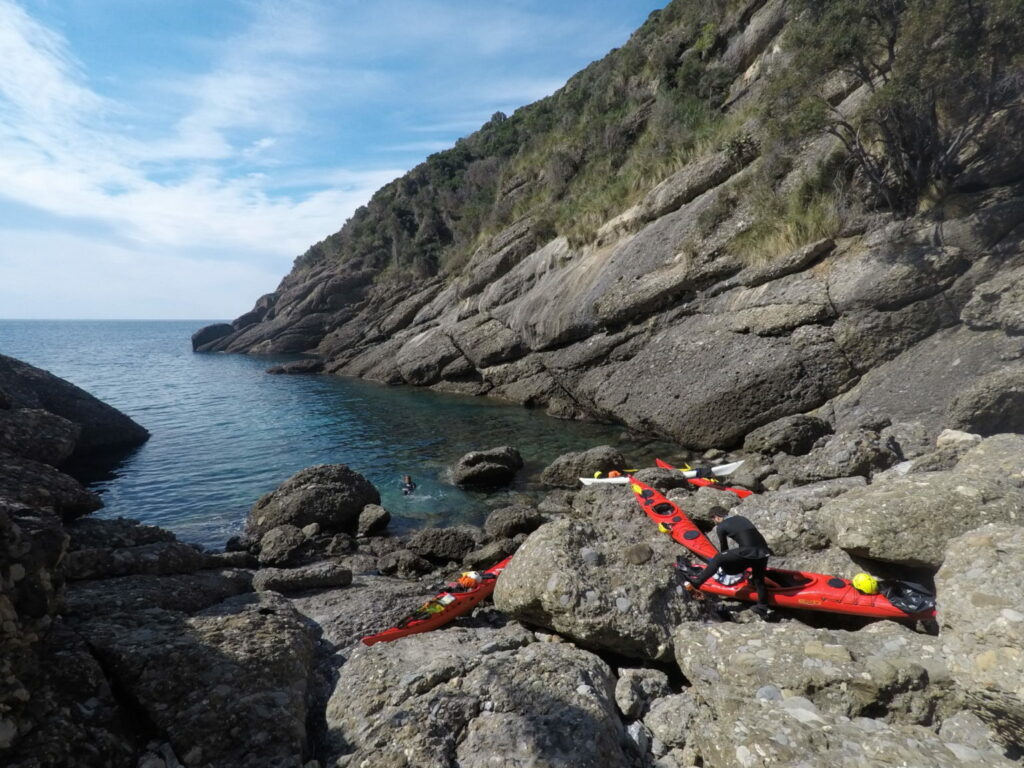
The Punta Chiappa batteries
Portofino Mountain Natural Park
We have spoken many times in this blog about the nature and beauty that the Portofino Mountain Natural Park offers.
But apart from its importance from the naturalistic point of view, perhaps not everybody knows that it also possesses a certain historical relevance. In fact Portofino Mountain still today has numerous signs that witness to the passage of the Second World War. One of the most important constructions of the epoch is the Punta Chiappa batteries complex. This battery point, built at the end of the 1930s, was part of the coastal defence system of the Genoa territory, together with those built at Arenzano, Pegli and up on Monte Moro.
The complex, made up of various bunkers, underground tunnels and barracks, has recently been restored. This is certainly one of the most frequented parts of the park, thanks to its vicinity to San Rocco and to its breathtaking view. Plus various tracks lead off from here, such as the panoramic trail to San Fruttuoso or the steep path bound for Punta Chiappa.
The trail to Punta Chiappa which leads off from the new battery point visitor centre is still the original one created and followed by the soldiers of the time. Along the steep route you come across various structures of the complex and thanks to interactive panels find out about all the history and facts regarding these singular places
If you are history buffs you could also have a look at this book: “My diary:1942-1945” by Hans Hill, an important witness account by this young German soldier stationed here in Punta Chiappa.
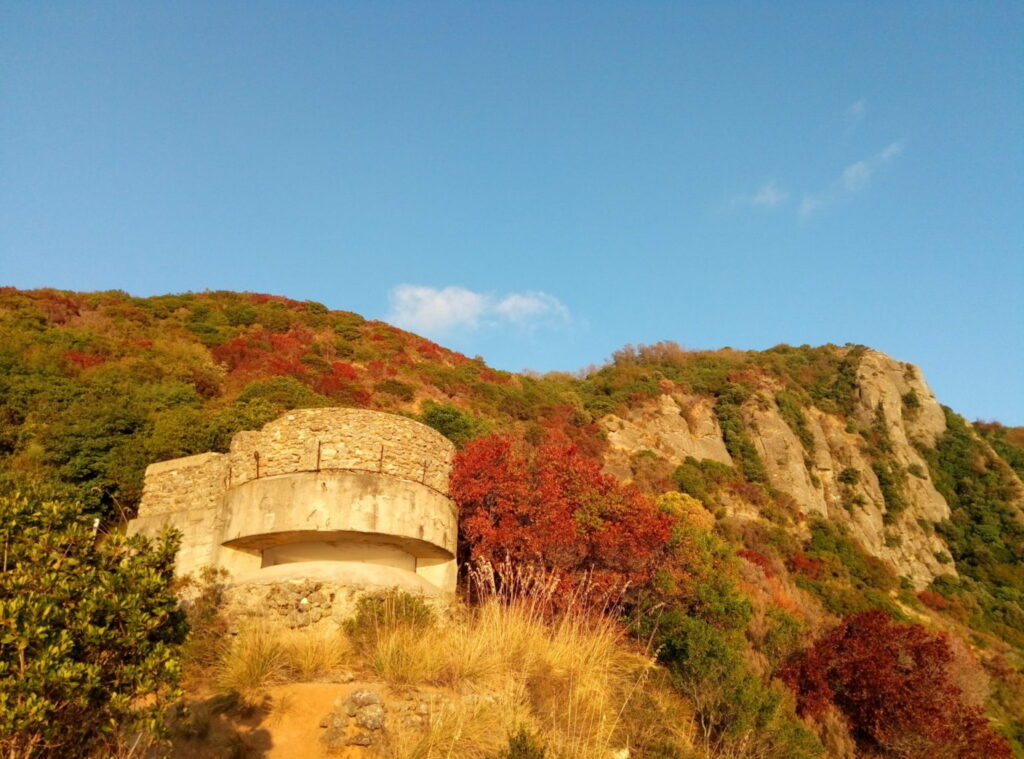
And here you are with six of the many other curiosities connected with Camogli. If this makes you more curious about the place or if you would like to know more, write to us here in the comments section below. Follow the “Did you know…” highlight on our Instagram profile to discover many other fun facts about the culture, nature and territory of Camogli and much more!




